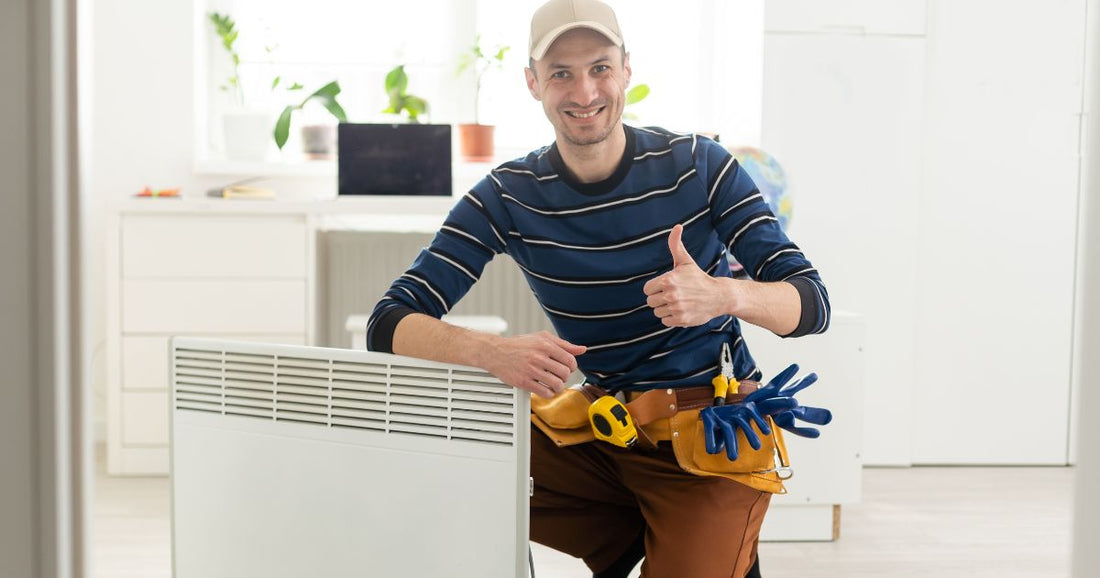
How Gas Space Heaters Can Contribute to Indoor Air Quality Issues
Gas space heaters, while effective for keeping indoor spaces warm, can significantly contribute to indoor air quality issues if not properly maintained. These heaters often release combustion byproducts, such as carbon monoxide (CO), nitrogen dioxide (NO2), and particulate matter, into the air.
Without adequate ventilation, these pollutants can accumulate to harmful levels, leading to a range of health problems including headaches, dizziness, respiratory issues, and in severe cases, carbon monoxide poisoning. Ensuring that your gas space heater is well-ventilated and regularly inspected is crucial for maintaining a healthy indoor environment.
In addition to direct emissions, gas space heaters can also exacerbate indoor air quality issues by reducing overall ventilation in a space. When doors and windows are kept closed to retain heat, the natural exchange of indoor and outdoor air is minimized, leading to higher concentrations of indoor pollutants.
This can create a stuffy atmosphere that contributes to what’s often referred to as "cabin fever," where poor air quality affects both physical and mental well-being. To mitigate these risks, consider using air quality monitors, ensuring proper ventilation, and performing regular maintenance on your gas heater to keep your indoor environment safe and comfortable.
New vs. Old Heaters
Most people worry about carbon monoxide (CO) from unventilated gas heaters. There is a lower risk of CO poisoning in newer indoor gas space heaters because they have a built-in oxygen depletion sensor. If too much CO or CO2 is produced, the oxygen level in a room will lower and shut down the heater automatically.
However, older space heaters or outdoor heaters do not have any sensors. When used in enclosed spaces, CO can reach dangerous levels.
This is why no matter what kind of gas heater you have, you should keep a carbon monoxide alarm nearby. Oxygen sensors can fail, and carbon monoxide can (and does) kill. CO alarms are inexpensive, and readily available in home improvement stores. For added safety, follow the heater manufacturer's instructions carefully, and avoid using unventilated heaters when you are sleeping.
Gas Space Heater Manufacturer's Instructions
The other important thing to do is to follow the manufacturer's instructions. In regards to safety, they all make 2 important points:
- Use adequate ventilation in the room (open a window once and a while)
- Don't let the heater run continuously unattended ( especially while sleeping)
The problem with keeping the room sealed up is that heat is generated from a flame, and the flame burns oxygen. Over time, if oxygen levels are depleted, CO levels will rise. CO is the result of combustion without enough oxygen.
Signs Your Gas Space Heater Is Affecting Your Health and How to Address It
Recognizing the signs that your gas space heater is affecting your health is crucial for maintaining a safe and comfortable indoor environment.
Common symptoms of exposure to poor air quality caused by gas heaters include but are not limited to:
- Frequent headaches
- Dizziness
- Fatigue
- Irritation of the eyes, nose or throat
- Nausea
- Confusion
- Fatality
If you notice any of these symptoms, it’s important to consider your gas space heater as a potential source and take immediate action.
Addressing these health concerns begins with ensuring that your gas space heater is properly maintained and ventilated. Regularly inspect your heater for signs of wear or malfunction, such as yellow or flickering flames, which can indicate incomplete combustion and higher pollutant levels.
Installing carbon monoxide detectors near the heater and in sleeping areas can provide an early warning of dangerous gas levels. Additionally, make sure your space is well-ventilated, especially during heater operation, by opening windows or using exhaust fans to help disperse pollutants. If symptoms persist, it may be time to consult a professional to assess your heater and explore alternative heating options that offer a safer, healthier environment.
CO vs. CO2
In addition to carbon monoxide (CO), all gas space heaters produce large amounts of carbon dioxide (CO2). While not normally harmful, too much CO2 in an enclosed space results in sleepiness, and headaches.
High levels of CO2 contribute to what we often call “cabin fever.”
Here's one more reason to ventilate the room: if carbon dioxide accumulates over a long period of time in an unventilated space, the flame of the heater slowly converts carbon dioxide to carbon monoxide!
To monitor indoor CO2 levels, many people use our TIM10 Desktop Meter.
If CO2 levels are high (above 5,000ppm) it is time to open a window or go outside for some fresh air.
Learn about the difference between CO and CO2.
CO Alarms
While a CO2 meter can alert you to high levels of CO2 that can make you feel sick, it isn't a replacement for a carbon monoxide alarm. CO alarms should be installed in every home, and are now required by law in many new buildings and rental units.
How important are CO detectors? Learn about the dangers of CO to your health.
For more information or for technical sales contact CO2Meter online or call us at 877-678-4259.








